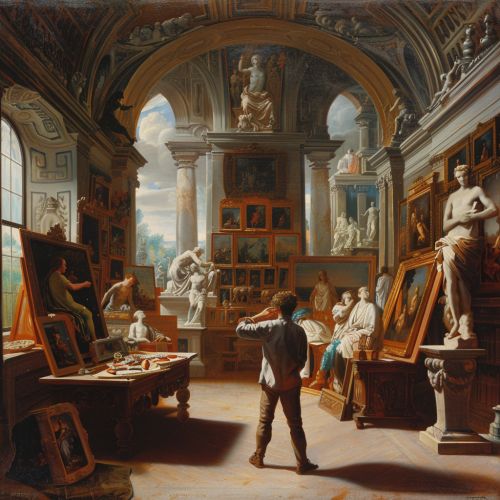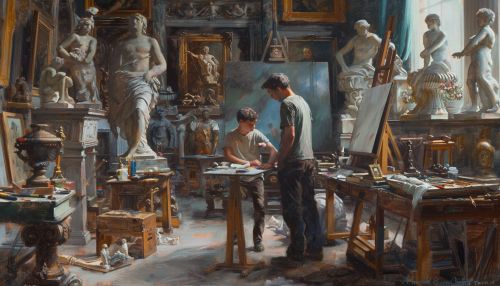Jean-Honoré Fragonard
Early Life
Jean-Honoré Fragonard was born on April 5, 1732, in Grasse, France. He was the son of a glove maker, and his family moved to Paris when he was six years old. Despite his humble beginnings, Fragonard showed an early talent for art and was apprenticed to a Parisian painter at the age of 14.
Education
Fragonard studied under several prominent artists of his time, including François Boucher, a leading painter in the Rococo style. He also attended the French Academy in Rome, where he was exposed to the works of the Italian masters. Fragonard's time in Rome had a profound impact on his style, and he began to incorporate elements of the Italian Baroque into his own work.


Career
Fragonard's career spanned several decades, and he was known for his prolific output. He produced more than 550 paintings, drawings, and etchings, many of which are now housed in museums around the world. His work is characterized by its exuberance, color, and sensuality, and he is considered one of the leading figures of the Rococo movement.
Fragonard's work was popular with the French aristocracy, and he received numerous commissions from wealthy patrons. However, his career was significantly impacted by the French Revolution, which led to a decline in the demand for his work.
Style and Influence
Fragonard's style is characterized by its lightness, grace, and sensuality. His paintings often depict scenes of love and courtship, set in lush, idyllic landscapes. He was known for his skillful use of color and his ability to capture the play of light on various surfaces.
Fragonard's work had a significant influence on later artists, including the Impressionists. His emphasis on color and light, as well as his loose brushwork, can be seen in the works of artists like Pierre-Auguste Renoir and Claude Monet.
Later Life and Death
In his later years, Fragonard returned to his hometown of Grasse and spent his time painting landscapes. He died on August 22, 1806, at the age of 74.
Legacy
Today, Fragonard is remembered as one of the most important painters of the Rococo period. His works are held in high esteem and are displayed in major museums around the world, including the Louvre in Paris and the Metropolitan Museum of Art in New York.
